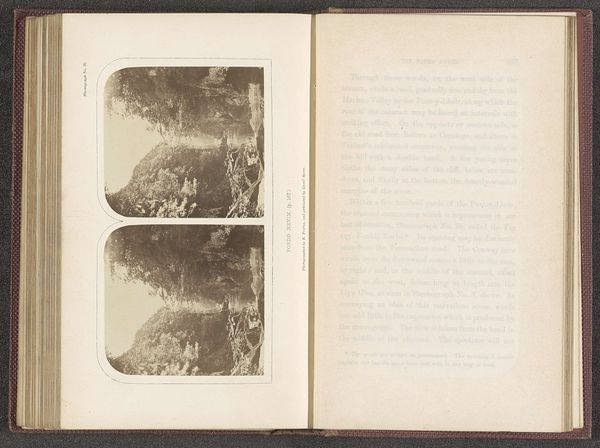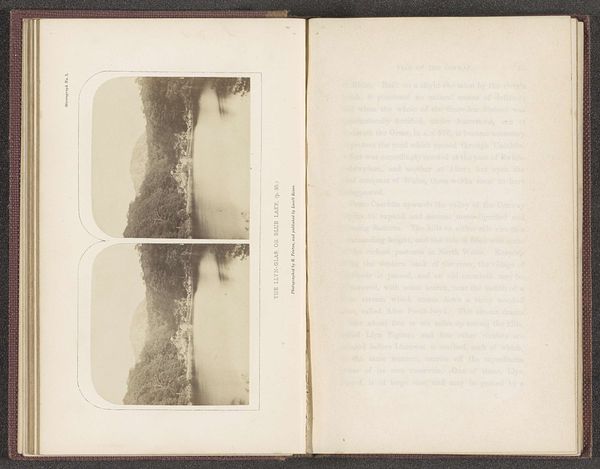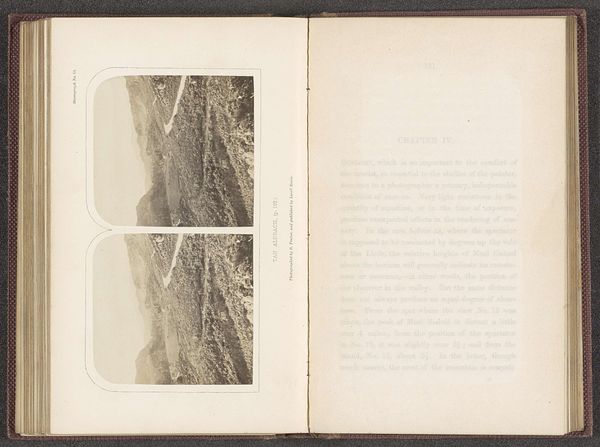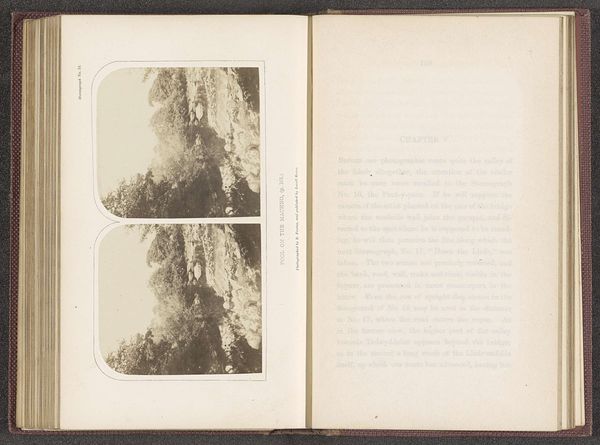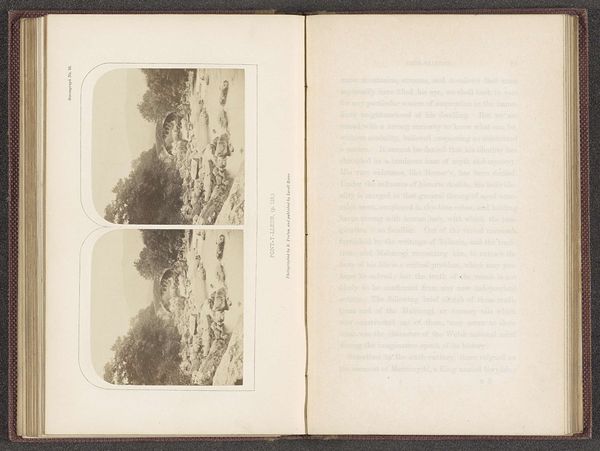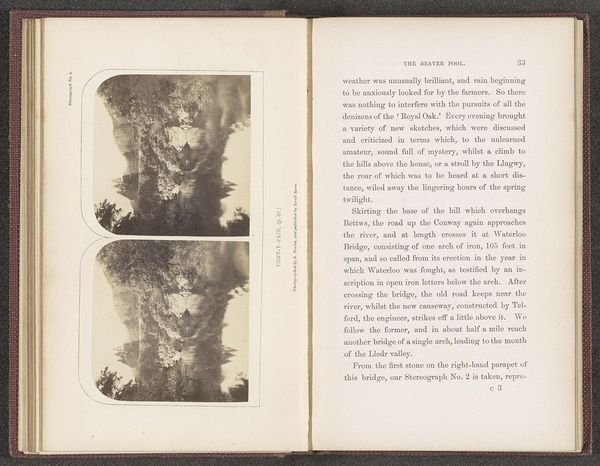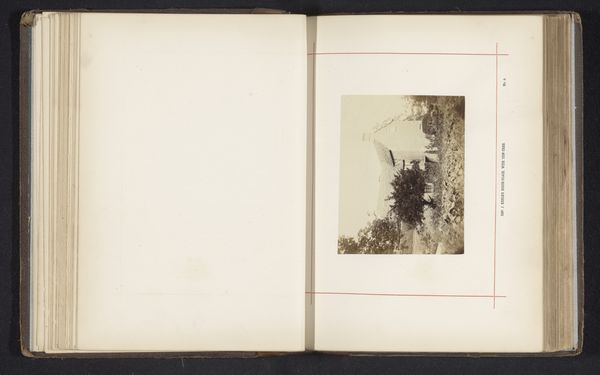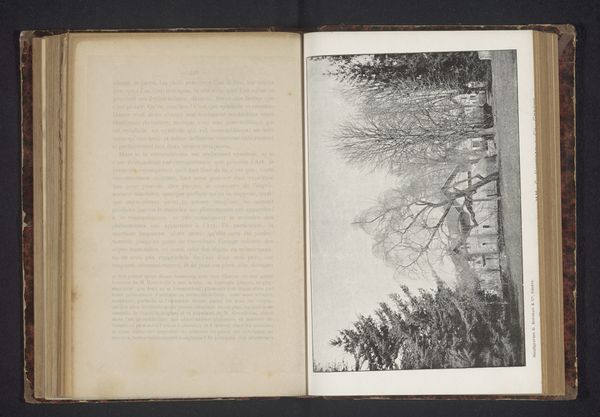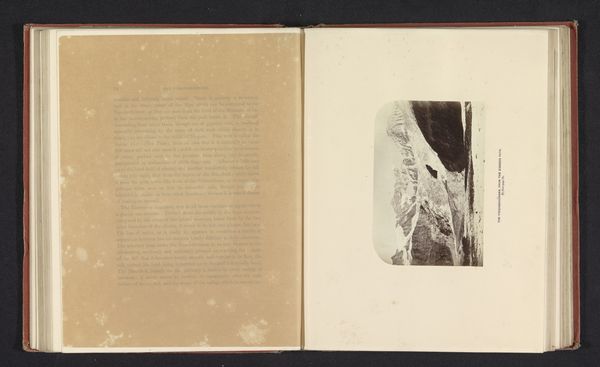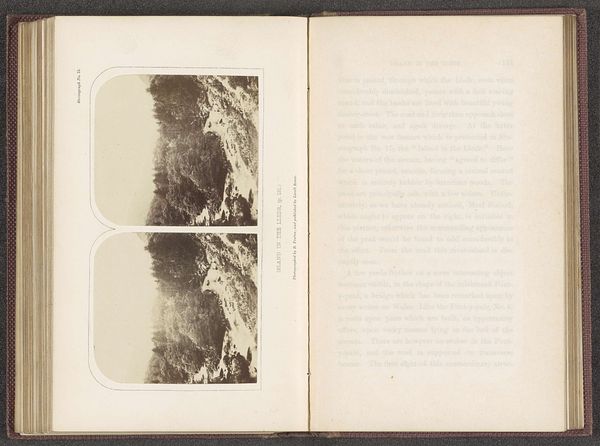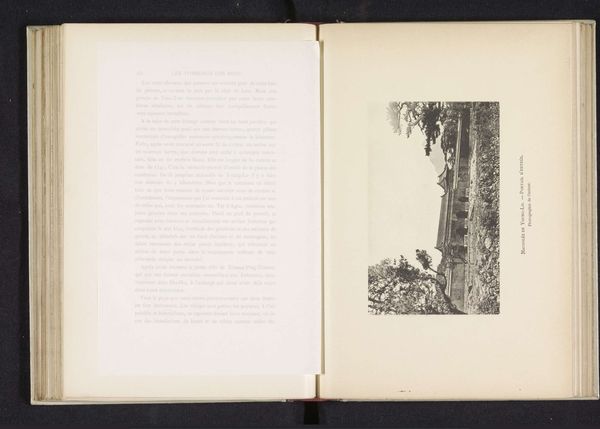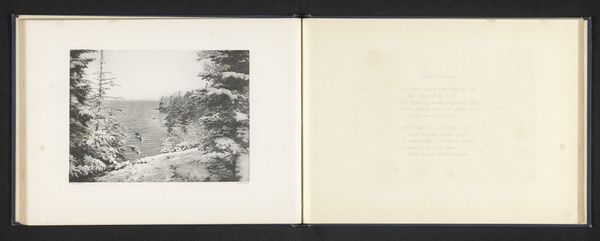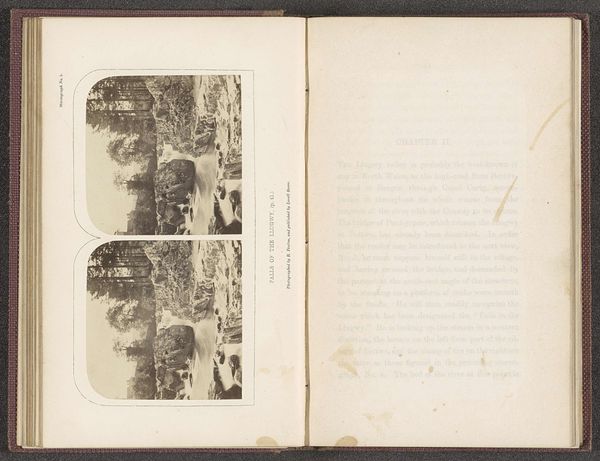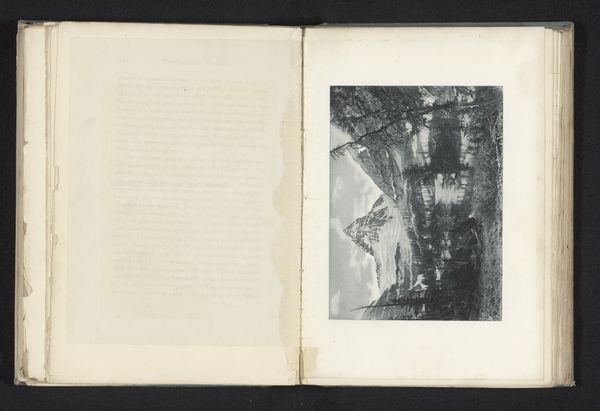
Dimensions: height 128 mm, width 197 mm
Copyright: Rijks Museum: Open Domain
Editor: Here we have Roger Fenton’s "Double Bridge on the Machno," a gelatin silver print from 1859. It's strikingly serene; the soft focus makes the scene almost dreamlike. What strikes you when you look at it? Curator: That dreamlike quality speaks volumes, doesn't it? Fenton’s work, while seemingly apolitical landscapes, was created during the height of the British Empire. Consider how landscape photography, during this era, frequently romanticized and thus, legitimized the colonial project. How do you think the picturesque presentation of the Welsh countryside might play into this dynamic? Editor: That’s a powerful point. I hadn’t thought about the act of romanticizing as a political act. Maybe by showing an idealized, peaceful countryside, it obscures the realities of power structures and land ownership at the time? Curator: Exactly. And consider the industrial revolution, rapidly changing the landscape of Britain. This idyllic image then becomes a form of escapism, a visual retreat from the realities of urbanization and its discontents, especially for the burgeoning middle class. What is "nature" except that which we make? Editor: So the photograph isn't just a reflection of nature, but also a reflection of societal desires and anxieties of the time. The framing becomes almost like a form of control. Curator: Precisely. It prompts us to think critically about how representations of landscape can uphold specific ideological agendas. Editor: This gives me so much to consider! It’s not just a pretty picture, it's a complex statement about a specific time and place. Curator: Indeed. It pushes us to delve deeper into the socio-political undercurrents that shaped its creation and reception.
Comments
No comments
Be the first to comment and join the conversation on the ultimate creative platform.
